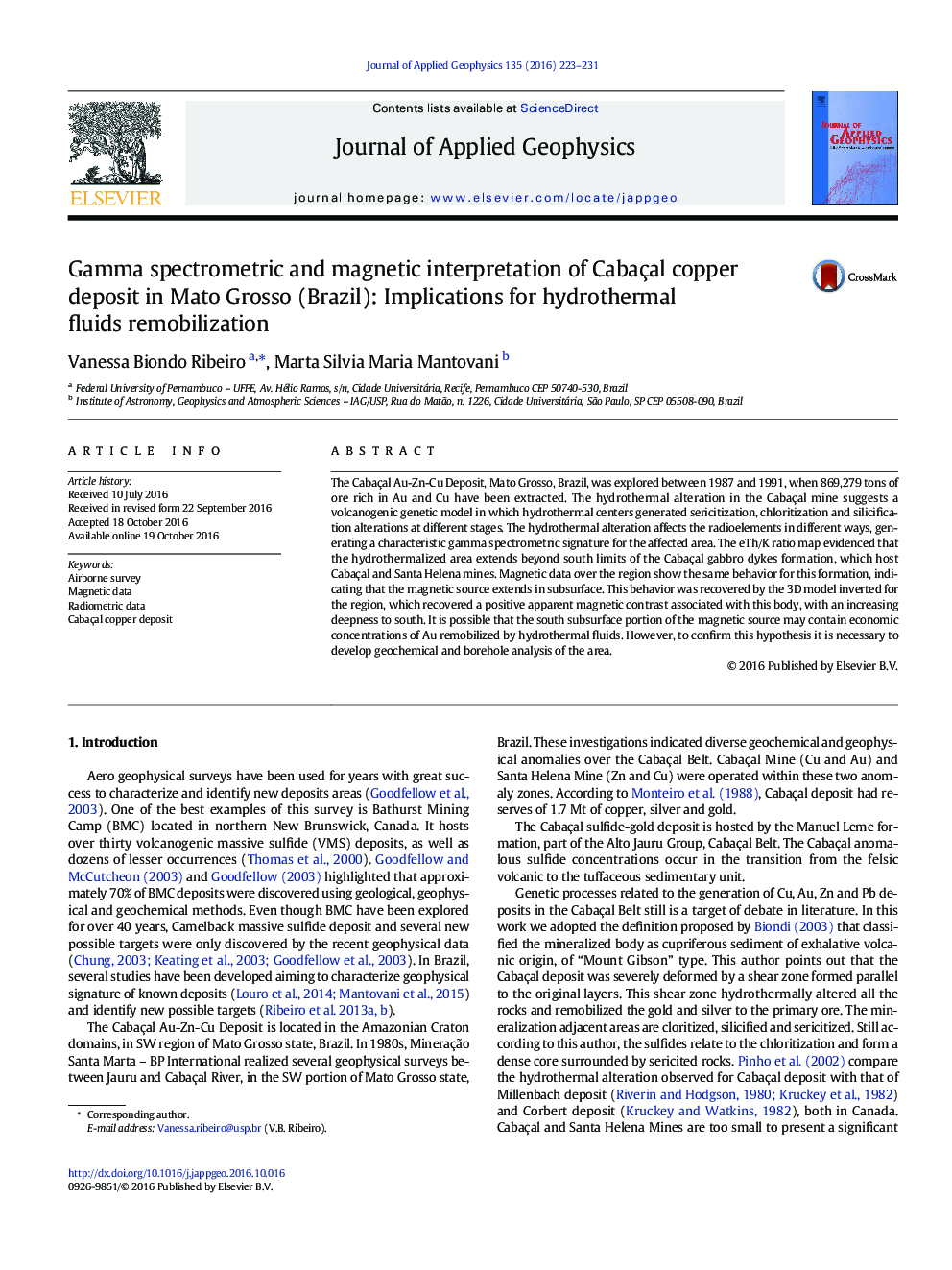| Article ID | Journal | Published Year | Pages | File Type |
|---|---|---|---|---|
| 4739705 | Journal of Applied Geophysics | 2016 | 9 Pages |
•Study of the radiometric and magnetic signature of the Cabaçal Au-Zn-Cu deposit•Geophysical methods application to discover new occurrences of sulfide deposits•Implications of hydrothermal fluids remobilization over radiometric data•Geophysical study allowed identifying possible new exploration targets in depth.
The Cabaçal Au-Zn-Cu Deposit, Mato Grosso, Brazil, was explored between 1987 and 1991, when 869,279 tons of ore rich in Au and Cu have been extracted. The hydrothermal alteration in the Cabaçal mine suggests a volcanogenic genetic model in which hydrothermal centers generated sericitization, chloritization and silicification alterations at different stages. The hydrothermal alteration affects the radioelements in different ways, generating a characteristic gamma spectrometric signature for the affected area. The eTh/K ratio map evidenced that the hydrothermalized area extends beyond south limits of the Cabaçal gabbro dykes formation, which host Cabaçal and Santa Helena mines. Magnetic data over the region show the same behavior for this formation, indicating that the magnetic source extends in subsurface. This behavior was recovered by the 3D model inverted for the region, which recovered a positive apparent magnetic contrast associated with this body, with an increasing deepness to south. It is possible that the south subsurface portion of the magnetic source may contain economic concentrations of Au remobilized by hydrothermal fluids. However, to confirm this hypothesis it is necessary to develop geochemical and borehole analysis of the area.
